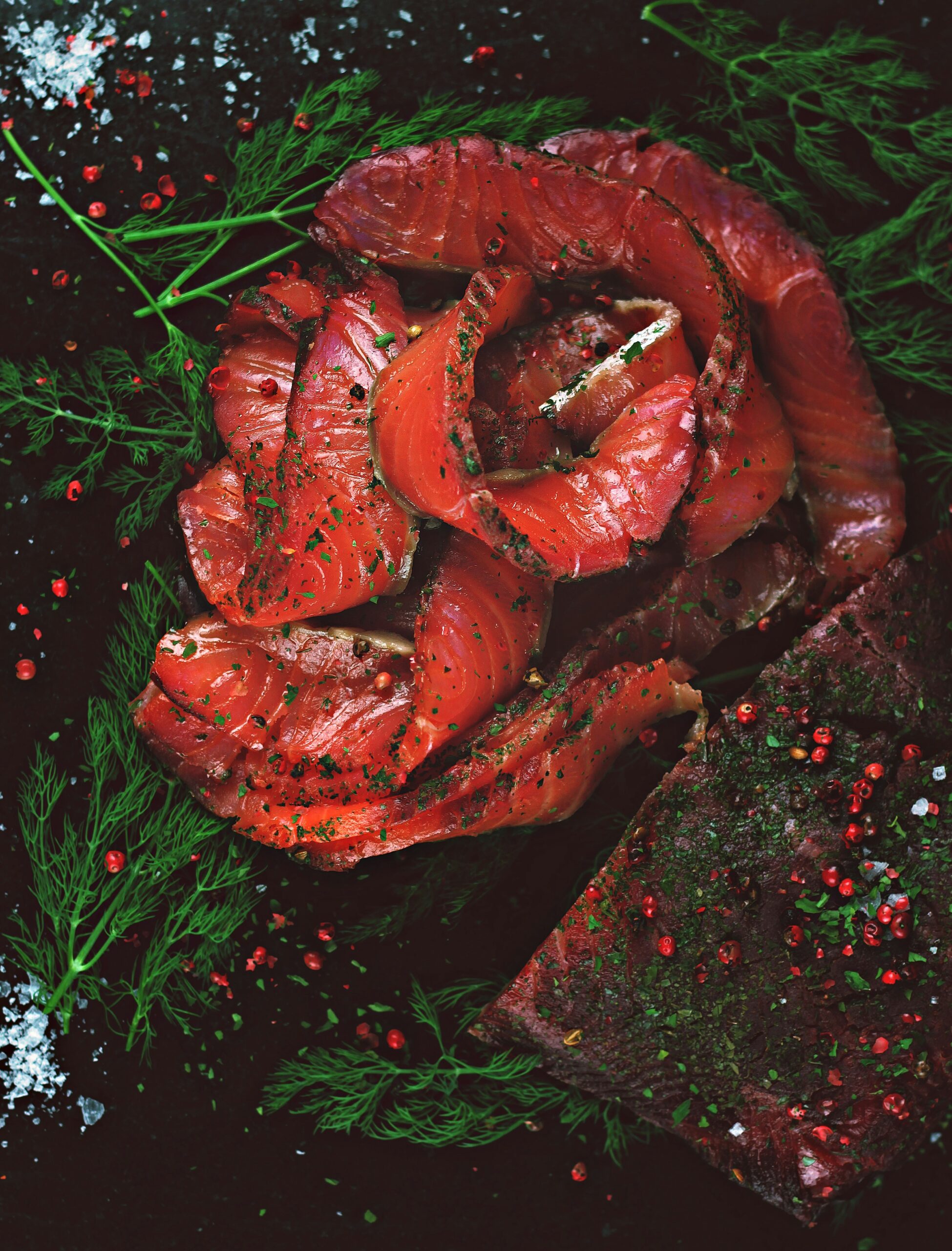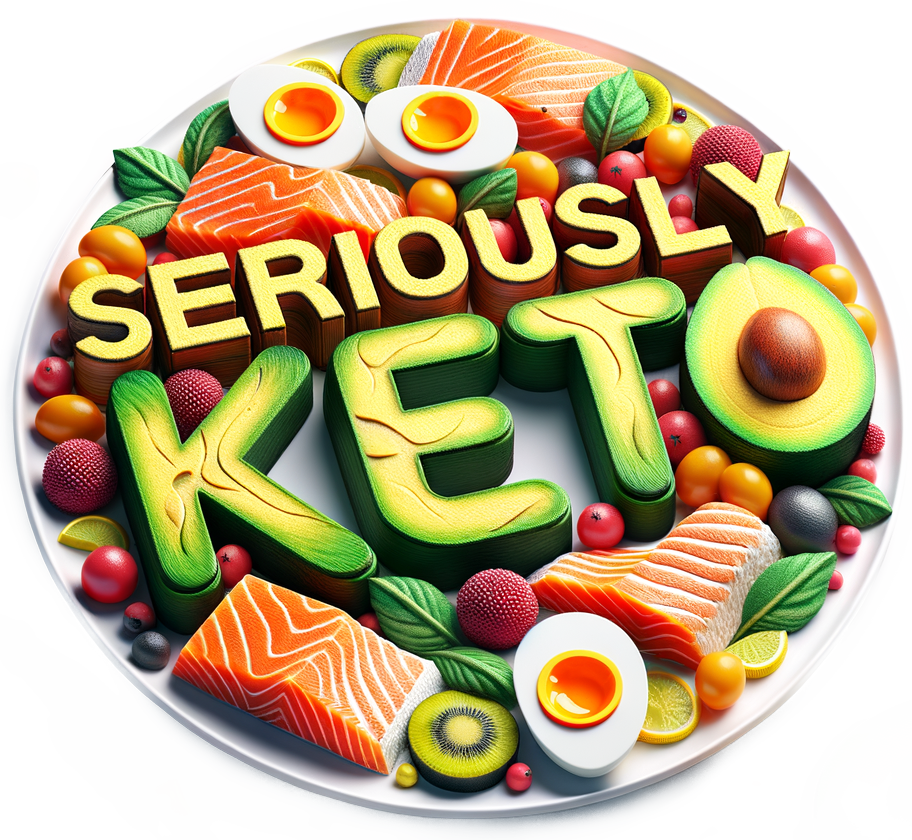Are you currently following or considering starting a keto diet? If so, you may be wondering about the types of meat that you can enjoy while following this low-carb, high-fat diet. The keto diet emphasizes consuming foods that are low in carbohydrates but high in protein and healthy fats, making meat a staple in many keto-friendly meals. From juicy steaks to succulent chicken thighs, there is a wide range of meats that you can enjoy while still staying in ketosis. In this article, we will explore the various types of meat that are allowed on the keto diet, providing you with delicious options to satisfy your carnivorous cravings.
Understanding the Keto Diet
Concept of the Keto Diet
The Keto Diet, short for ketogenic diet, is a low-carb, high-fat diet that has gained popularity in recent years. The concept behind the diet is to switch the body’s primary source of fuel from carbohydrates to fats, leading to a metabolic state known as ketosis. In ketosis, the body breaks down fats into ketones, which are then used as fuel instead of glucose.
Benefits of the Keto Diet
The keto diet offers numerous benefits for individuals looking to improve their health and lose weight. By reducing carbohydrate intake and increasing the consumption of healthy fats, the keto diet can help promote weight loss by suppressing appetite and increasing satiety. Additionally, it may improve insulin sensitivity, lower blood sugar levels, and reduce the risk of developing chronic diseases such as diabetes and heart disease.
Drawbacks of the Keto Diet
While the keto diet has its advantages, it is important to be aware of potential drawbacks as well. Some individuals may experience initial side effects such as the “keto flu,” which includes symptoms like fatigue, dizziness, and nausea as the body adjusts to using fats as a primary fuel source. It is also crucial to ensure a balanced intake of nutrients, as restricting carbohydrates can limit the consumption of certain vitamins, minerals, and fiber. Lastly, the keto diet may not be suitable for everyone, especially those with certain medical conditions or dietary restrictions, so consulting with a healthcare professional is recommended before starting this diet.
Importance of Protein in the Keto Diet
Role of Protein in Body
Protein plays a critical role in the body, regardless of the type of diet you follow. It is essential for the growth, repair, and maintenance of tissues, including muscles, bones, and organs. Protein also supports the production of enzymes, hormones, and antibodies, which are vital for various bodily functions. Additionally, protein is known to contribute to feelings of satiety, helping to control appetite and prevent overeating.
How much Protein is needed on the Keto Diet
Determining the right amount of protein to consume on the keto diet is crucial to maintaining a healthy balance of macronutrients. While the main focus of the diet is on high-fat intake, it is recommended to consume an adequate amount of protein to support muscle mass and overall health. Generally, it is advised to aim for around 0.6-0.8 grams of protein per pound of body weight. However, individual protein requirements may vary based on factors such as activity level, age, and goals.
How Protein helps in Ketosis
Protein is a valuable component of the keto diet as it helps preserve lean muscle mass and prevents muscle breakdown, especially when the body is in a state of ketosis. Adequate protein intake can also support glycogen production, which helps fuel intense workouts and maintain energy levels. Furthermore, protein has a minimal impact on blood sugar levels and insulin response, making it a suitable macronutrient for those following a low-carb diet like keto.

General Guidelines for Choosing Meat for Keto Diet
Choosing High-Quality Meat
When selecting meat for the keto diet, it is essential to prioritize quality. Opt for organic, grass-fed, or pasture-raised meat whenever possible, as these options tend to be higher in essential nutrients and healthier fats. Look for meat that is free from added hormones and antibiotics, as these can have negative health implications. Prioritizing high-quality meat ensures that you are consuming a nutrient-dense protein source and promotes overall well-being.
Beware of Processed Meat
While meat can be a staple of the keto diet, it is important to be cautious of processed meat products. Processed meats such as deli meats, sausages, and bacon often contain added sugars, artificial preservatives, and unhealthy fats that can hinder your health goals. Choose fresh, unprocessed meats instead, or read labels carefully to ensure that processed meat products are free from unwanted additives.
Watching out for Hidden Sugars in Meats
When incorporating meat into your keto diet, it is crucial to be mindful of hidden sugars. Some packaged or marinated meats may contain added sugars, which can negatively impact ketosis and overall health. Read labels carefully and opt for natural or sugar-free varieties whenever possible. Additionally, be cautious of barbecue sauces or glazes used in certain meat dishes as they often contain hidden sugars or high carbohydrate content.
Beef in the Keto Diet
Advantages of Beef in Keto
Beef is a versatile and nutrient-dense option for individuals following the keto diet. It is an excellent source of protein, providing essential amino acids necessary for muscle growth and repair. Additionally, beef is rich in vitamins and minerals, including vitamin B12, iron, and zinc, which are essential for maintaining optimal health. Furthermore, beef contains healthy fats, especially in cuts such as ribeye or fatty ground beef, making it an ideal choice for those embracing a high-fat diet like keto.
Cuts of Beef Suitable for Keto
When choosing beef for the keto diet, it is recommended to opt for fattier cuts. This includes cuts like ribeye, T-bone, and New York strip steak, as well as ground beef with a higher fat percentage. These cuts tend to be higher in healthy fats and lower in carbohydrates, making them well-suited for the keto lifestyle. However, it is important to consume beef in moderation and balance it with other protein sources to maintain overall dietary variety.
Recipes Incorporating Keto-Friendly Beef
There are numerous delicious recipes that incorporate beef, making it easy to enjoy keto-friendly meals. One popular option is a juicy ribeye steak cooked to perfection and served with a side of steamed vegetables sautéed in butter. Another great choice is a comforting beef stew made with low-carb vegetables and rich broth. If you’re looking for something quick and easy, consider making beef lettuce wraps with ground beef, spices, and various keto-friendly toppings. The possibilities are endless when it comes to enjoying beef while following the keto diet.

Chicken in the Keto Diet
Benefits of Chicken in Keto
Chicken is a lean and versatile protein source that can be highly beneficial for individuals on the keto diet. It is low in saturated fat and carbohydrates, making it an excellent choice for maintaining ketosis and promoting weight loss. Chicken is also rich in essential nutrients such as niacin, selenium, and vitamin B6, which contribute to overall health and well-being. Furthermore, it is an affordable and widely available meat option, making it a popular choice for many keto practitioners.
Suitable Parts of Chicken for Keto
When consuming chicken on the keto diet, it is important to prioritize lean cuts or skinless chicken to minimize fat intake. Skinless chicken breasts or chicken tenderloins are excellent options as they are lower in fat compared to other parts of the bird. However, it is worth noting that dark meat cuts, such as chicken thighs or drumsticks, contain slightly higher fat content and can be enjoyed in moderation on the keto diet.
Creating Keto-Friendly Chicken Dishes
There are countless ways to prepare chicken dishes that are both delicious and keto-friendly. Grilled chicken breasts seasoned with herbs and spices make for a simple yet satisfying meal. You can also try baking chicken thighs with a crispy skin using a combination of spices and a high-quality olive oil-based marinade. For those looking for a quick lunch option, consider making a refreshing chicken salad with avocado, greens, and a homemade keto-friendly dressing. The versatility of chicken allows for endless possibilities when it comes to creating tantalizing keto meals.
Fish in the Keto Diet
Introduction to Fish on Keto
Fish is a highly nutritious food that can be a valuable addition to the keto diet. It is a rich source of high-quality protein, essential omega-3 fatty acids, and various vitamins and minerals such as vitamin D and iodine. Consuming fish regularly is associated with numerous health benefits, including improved heart health, brain function, and reduced inflammation.
Fish Varieties Ideal for Keto
When incorporating fish into the keto diet, it is recommended to choose fatty fish varieties. Fatty fish such as salmon, mackerel, sardines, and trout are not only rich in omega-3 fatty acids but also contain negligible carbohydrates. These varieties of fish provide a healthy dose of fats that are beneficial for maintaining ketosis and overall health. Additionally, shellfish such as shrimp, clams, and scallops can also be enjoyed on the keto diet, as they are low in carbohydrates and high in protein.
Preparing Keto-Appropriate Fish Dishes
There are countless ways to enjoy fish while following the keto diet. Grilling or baking fatty fish fillets with a sprinkle of lemon juice and herbs is a simple yet delicious option. Another popular choice is to pan-sear fish in a healthy fat like coconut oil and serve it with a side of sautéed low-carb vegetables. If you’re looking for variety, consider making a flavorful fish curry using coconut milk and keto-friendly spices. Fish offers a wide range of flavors and textures, making it a versatile ingredient for creating satisfying and nutritious keto meals.

Pork in the Keto Diet
Why Include Pork in Keto
Pork is a protein-rich meat that can provide valuable nutrients for those following the keto diet. It contains essential vitamins and minerals, including thiamine, selenium, and vitamin B12, which are necessary for optimal health. Additionally, pork offers a variety of cuts, allowing for versatility in meal preparation. However, it is crucial to choose pork options that are minimally processed and free from added sugars or unhealthy additives.
Best Cuts of Pork for Keto
When selecting pork cuts for the keto diet, it is important to choose fatty options that are low in carbohydrates. Some suitable cuts include pork belly, pork shoulder (also known as pork butt), and pork loin. These cuts are higher in healthy fats and offer a good amount of protein while containing minimal carbohydrates. Consumed in moderation and combined with other nutrient-dense foods, pork can be enjoyed as part of a keto-friendly meal plan.
Keto Pork Recipes to Try
There are numerous mouthwatering recipes that showcase the versatility of pork in keto cooking. One popular option is to roast a pork shoulder until tender and juicy, shredding it and serving it with low-carb barbecue sauce for a flavorful pulled pork dish. Another delicious choice is to pan-fry pork chops in grass-fed butter and season them with herbs and spices. For those craving something savory and satisfying, consider making bacon-wrapped pork tenderloin stuffed with spinach and cheese. Pork offers a range of flavors and textures that can elevate your keto meals to the next level.
Shellfish and Seafood in the Keto Diet
The Role of Shellfish in Keto
Shellfish, including various types of mollusks and crustaceans, can be an excellent addition to the keto diet. Shellfish are low in carbohydrates and rich in essential nutrients such as protein, vitamins, and minerals. They are also a good source of omega-3 fatty acids, which have been associated with numerous health benefits, including reducing inflammation and supporting heart health. Additionally, shellfish are highly versatile and can be incorporated into a wide range of dishes.
Seafood Varieties for Keto Dieters
When it comes to seafood on the keto diet, there are numerous options to choose from. Fatty fish such as salmon, mackerel, and sardines are not only delicious but also provide an abundance of healthy fats and protein. Other seafood options such as shrimp, crab, lobster, and mussels are also excellent choices as they are low in carbohydrates and can be easily incorporated into various keto-friendly recipes.
Seafood-Based Keto Meals
From grilled seafood platters to creamy seafood chowders, the possibilities for seafood-based keto meals are endless. Grilling or baking a salmon fillet with a flavorful spice rub is a simple yet tasty option. For a refreshing and nutritious salad, consider combining cooked shrimp or crab with avocado, cucumber, and a lemon-olive oil dressing. If you’re in the mood for something more indulgent, create a creamy keto-friendly seafood casserole using a combination of fish, scallops, and a rich, low-carb cream sauce. Seafood offers a plethora of culinary possibilities that can bring excitement to your keto meal plan.
Lamb and Goat Meat in the Keto Diet
Advantages of Lamb and Goat Meat on Keto
Lamb and goat meat are excellent protein sources that offer unique flavors and beneficial nutrients for individuals following the keto diet. Both meats are rich in high-quality protein, vitamins, and minerals. Lamb, in particular, is a good source of iron and vitamin B12, which are crucial for energy production and maintaining healthy blood cells. The flavor profiles of lamb and goat meats add diversity to keto meals and can help keep your diet enjoyable and sustainable.
Choosing the Right Cuts for Keto
When incorporating lamb and goat meat into the keto diet, it is best to opt for cuts that are lean or have a moderate fat content. Examples of lean cuts include leg of lamb or goat, loin chops, or tenderloin. These cuts provide ample protein while keeping the fat content relatively low. However, if you prefer fattier cuts and are comfortable with higher fat intake, options such as lamb or goat shoulder can be enjoyed in moderation.
Cooking Lamb and Goat for Keto
Lamb and goat meat can be cooked in various ways to create keto-friendly dishes bursting with flavor. Grilling or roasting lean cuts of lamb with a blend of herbs and spices can result in a delicious and satisfying meal. Slow-cooking lamb or goat shoulder in a crockpot with bone broth and low-carb vegetables can yield tender and flavorful meat for hearty stews. Additionally, ground lamb or goat can be used in dishes such as keto-friendly Mediterranean-style meatballs or flavorful curries packed with spices and herbs. Experimenting with lamb and goat meat can add excitement and variety to your keto menu.
Turkey in the Keto Diet
Benefits of Turkey in Keto
Turkey is a lean protein that can be a healthy addition to the keto diet. It is low in fat and carbohydrates while providing essential nutrients such as phosphorus, selenium, and vitamin B6. Turkey is also rich in tryptophan, an amino acid that promotes the production of serotonin, a neurotransmitter known for its mood-enhancing properties. Including turkey in your keto meals can contribute to satiety and overall well-being.
Right Parts of Turkey for Keto
When consuming turkey on the keto diet, it is important to choose lean parts of the bird to keep fat intake in check. Skinless turkey breast is especially suitable as it is low in fat and carbohydrates while being packed with protein. Ground turkey can also be a great option, provided it is made from lean meat. However, it is worth noting that dark meat cuts such as turkey thighs or drumsticks contain slightly higher fat content and can be enjoyed in moderation on the keto diet.
Creating Keto-Friendly Turkey Dishes
Turkey presents a variety of possibilities for creating delicious and nutritious keto meals. Grilled turkey breast served alongside a refreshing salad and a side of grilled vegetables can make for a satisfying keto dinner. Another option is to make turkey lettuce wraps filled with ground turkey cooked with aromatic spices and sautéed vegetables. For a warming and comforting meal, prepare a turkey chili using lean ground turkey, tomatoes, and a blend of keto-friendly spices. Incorporating turkey into your keto diet keeps your meals exciting and allows you to enjoy the benefits of this lean protein source.
In conclusion, understanding the role of different meats in the keto diet is essential for creating a well-rounded and enjoyable eating plan. Whether you decide to incorporate beef, chicken, fish, pork, shellfish, lamb, goat meat, or turkey, each has its own set of advantages and suitable cuts for the keto lifestyle. By following general guidelines for choosing meat, prioritizing protein intake, and being mindful of hidden sugars or unhealthy additives, you can confidently select and prepare meats that support your keto goals. Experimenting with various recipes and flavors will ensure that your keto experience is not only healthy but also delicious and sustainable. Remember to listen to your body and consult a healthcare professional to determine the best approach for your specific dietary needs and goals. Happy keto cooking and bon appétit!

